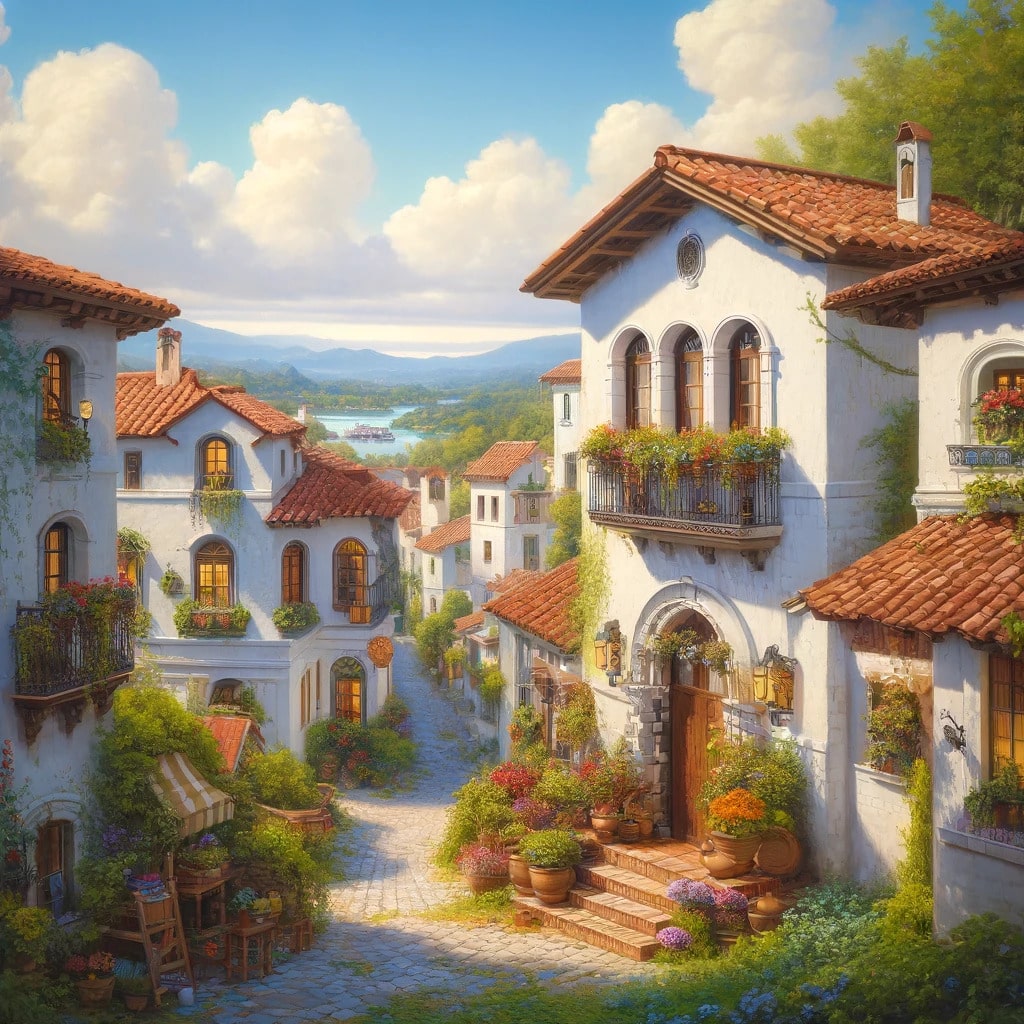Introduction
When you think of Spanish style homes, what comes to mind? Perhaps it’s the iconic red tile roofs, the charming courtyards, or the timeless stucco exteriors. Spanish style homes have a rich history and a distinct aesthetic that has captivated homeowners for centuries. In this guide, we’ll dive deep into the history, design, and features of Spanish style homes, giving you a comprehensive understanding of what makes them so special.
History of Spanish Style Homes
Origins in Spain
Spanish style homes trace their roots back to Spain, where the architecture was heavily influenced by Roman, Moorish, and Gothic styles. The blend of these styles created a unique architectural form that emphasized simplicity, functionality, and beauty.
Introduction to the Americas
When Spanish explorers and settlers arrived in the Americas in the 16th century, they brought their architectural styles with them. This led to the development of Spanish Colonial architecture, which adapted to the new environments and available materials.
Evolution Over Centuries
Over the centuries, Spanish style homes have evolved, incorporating elements from various architectural movements and regional influences. This evolution has resulted in several distinct styles, each with its own unique features.
Key Characteristics of Spanish Style Homes
Architectural Elements
Spanish style homes are known for their harmonious blend of form and function. Key architectural elements include stucco exteriors, clay tile roofs, and arched doorways and windows.
Common Materials Used
The primary materials used in Spanish style homes include stucco, clay, and wood. These materials not only give the homes their distinctive look but also provide durability and insulation.
Distinctive Features
Some distinctive features of Spanish style homes include wrought iron accents, decorative tile work, and exposed wooden beams. These elements add to the charm and character of the homes.
Exterior Design Features
White Stucco Walls
One of the most recognizable features of Spanish style homes is the white stucco walls. This finish helps keep the home cool in hot climates and gives it a clean, timeless appearance.
Red Tile Roofs
The red clay tile roofs are another hallmark of Spanish style homes. These tiles are not only aesthetically pleasing but also highly durable and weather-resistant.
Courtyards and Patios
Courtyards and patios are integral to Spanish style homes, providing outdoor living spaces that are perfect for relaxing and entertaining.
Decorative Tile Work
Decorative tile work is often used in Spanish style homes, adding color and pattern to floors, walls, and even staircases.
Interior Design Features
Exposed Wooden Beams
Inside Spanish style homes, exposed wooden beams are a common feature. These beams add warmth and character to the interior spaces.
Arched Doorways and Windows
Arched doorways and windows are another distinctive feature, giving the interiors a sense of elegance and flow.
Rustic Furnishings
The furnishings in Spanish style homes often have a rustic, handcrafted quality. Think heavy wooden furniture, wrought iron accents, and vibrant textiles.
Color Palette and Textiles
The color palette in Spanish style homes typically includes earthy tones like terracotta, ochre, and deep blues and greens. Textiles often feature intricate patterns and bold colors.
Types of Spanish Style Homes
Spanish Colonial
Spanish Colonial homes are the earliest form of Spanish style architecture in the Americas, characterized by their simple, functional design and use of local materials.
Mission Revival
Mission Revival homes draw inspiration from the old Spanish missions in California. They often feature smooth stucco walls, red tile roofs, and bell towers.
Mediterranean Revival
Mediterranean Revival homes combine elements of Spanish and Italian architecture. These homes are known for their grand, villa-like appearance and lush landscaping.
Pueblo Revival
Pueblo Revival homes are influenced by the traditional adobe structures of the Southwestern United States. They feature thick walls, flat roofs, and rounded edges.
Regional Variations
Differences Across Various Regions
Spanish style homes can vary significantly depending on the region. For example, homes in California might have more Mission Revival influences, while those in Florida might lean more towards Mediterranean Revival.
Influences of Local Culture and Climate
Local culture and climate play a big role in the design of Spanish style homes. In hotter climates, homes might have thicker walls and more shaded outdoor spaces to keep cool.
Landscaping and Outdoor Spaces
Gardens and Courtyards
Gardens and courtyards are key features of Spanish style homes, providing beautiful and functional outdoor spaces.
Fountains and Water Features
Fountains and water features are often found in the gardens and courtyards, adding a sense of tranquility and elegance.
Outdoor Living Areas
Outdoor living areas, such as patios and verandas, are designed for relaxation and entertainment, often featuring comfortable seating and lush greenery.
Famous Spanish Style Homes and Architects
Notable Examples
Some notable examples of Spanish style homes include the Casa del Herrero in California and the Mar-a-Lago estate in Florida.
Influential Architects
Influential architects like George Washington Smith and Addison Mizner played significant roles in popularizing Spanish style homes in the United States.
Modern Adaptations
Contemporary Takes on Spanish Design
Modern adaptations of Spanish style homes often incorporate contemporary elements, such as open floor plans and large windows, while still maintaining the traditional charm.
Integrating Modern Amenities
Many homeowners today integrate modern amenities, like smart home technology and energy-efficient systems, into their Spanish style homes.
Building and Renovating Spanish Style Homes
Considerations for New Builds
When building a new Spanish style home, it’s important to consider factors like climate, local building codes, and available materials.
Tips for Renovating Existing Homes
Renovating an existing Spanish style home can be a rewarding project. Key tips include preserving original features, using authentic materials, and working with experienced professionals.
Advantages of Spanish Style Homes
Aesthetic Appeal
Spanish style homes are undeniably beautiful, with their timeless design and charming details.
Energy Efficiency
The thick walls and tile roofs of Spanish style homes provide excellent insulation, making them energy-efficient.
Timelessness and Durability
Built with durable materials and timeless design principles, Spanish style homes can stand the test of time.
Challenges of Spanish Style Homes
Maintenance Requirements
Spanish style homes can require regular maintenance, especially in terms of stucco and tile repair.
Regional Suitability
These homes are best suited to warmer climates, as the design features are optimized for heat regulation.
Cost Implications
Building or renovating a Spanish style home can be expensive, particularly if using authentic materials and traditional craftsmanship.
Conclusion
Spanish style homes offer a unique blend of beauty, history, and functionality. Whether you’re drawn to their aesthetic appeal, their energy efficiency, or their timeless charm, there’s no denying the allure of this architectural style. With careful planning and attention to detail, a Spanish style home can be a dream come true.
FAQs
What are the main features of Spanish style homes?
Spanish style homes feature stucco walls, red tile roofs, arched doorways and windows, exposed wooden beams, and decorative tile work.
How do Spanish style homes differ from Mediterranean style homes?
While similar, Spanish style homes often have simpler, more rustic designs compared to the grand, villa-like appearance of Mediterranean style homes.
Are Spanish style homes energy-efficient?
Yes, the thick walls and tile roofs provide excellent insulation, making Spanish style homes energy-efficient.
Can I incorporate Spanish design elements into my existing home?
Absolutely! You can incorporate Spanish design elements like arched doorways, exposed wooden beams, and decorative tiles into your existing home.
What should I consider when renovating a Spanish style home?
When renovating, consider preserving original features, using authentic materials, and working with professionals experienced in Spanish style architecture.

